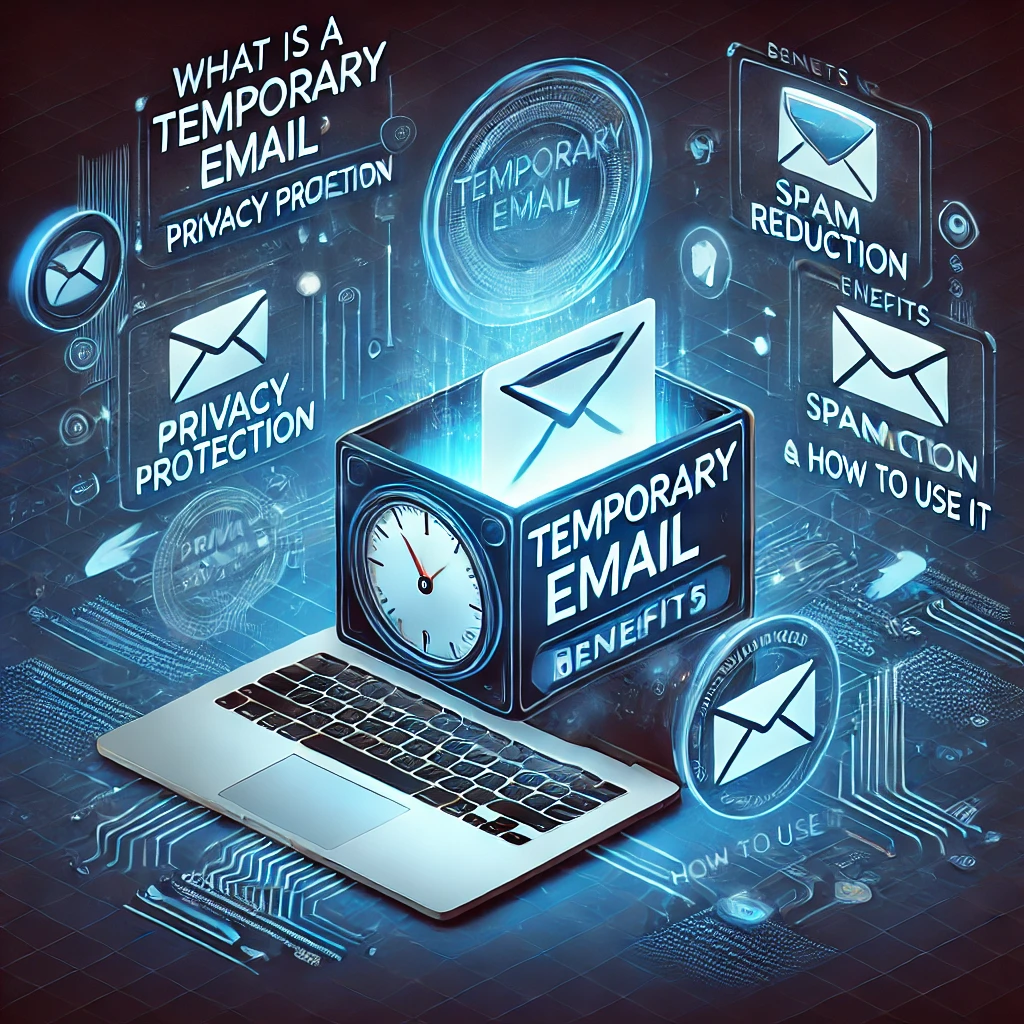What is a Temporary Email? Benefits and How to Use It
In an age where digital communication dominates our lives, privacy and security are paramount concerns. One effective tool to safeguard your email privacy is the temporary email, often referred to as disposable or fake email. This article delves into the definition, benefits, and effective use of temporary email, equipping you with the knowledge needed to enhance your online security.
Understanding Temporary Email
Temporary email services provide users with a short-lived email address that can be used for a limited period. These addresses enable individuals to send and receive emails without exposing their primary email accounts to potential spam or phishing attempts. Temporary emails can be self-destructing, disappearing after a certain period or once the user has finished with168026# What is a Temporary Email? Benefits and How to Use It
In today’s digitally interconnected world, where email communication is indispensable, the need for privacy and security has become paramount. This need has given rise to concepts like temporary email, disposable email, fake email, and anonymous email. These services provide solutions to users who wish to protect their primary email accounts from spam, intrusive advertising, or potential data breaches. This article will delve into the nature of temporary emails, their benefits, and how to effectively use them.
Understanding Temporary Email
A temporary email, also known as a disposable or one-time email, is an email address that is created for short-term use. Unlike traditional email accounts that you may use for years or decades, temporary email addresses are designed to exist for a limited timeframe. Often, they become inactive after a certain period or once a predetermined number of messages have been received.
These temporary email services generally allow users to create a unique email address without the need to register or provide personal information. As a result, they offer a layer of anonymity, appealing to individuals prioritizing email privacy and online security.
Key Features of Temporary Email Services
-
Expiration Time: Most temporary email services allow emails to expire after a certain period, ranging from a few minutes to several days.
-
Anonymity: Users are not required to give personal information, which helps in maintaining privacy.
-
Spam Protection: By using a temporary email address, users can avoid spam in their primary inboxes.
-
Self-Destructing Emails: Some services offer messages that self-destruct after being read, further securing user information.
-
Ease of Use: Setting up a temporary email account is generally straightforward, requiring only a few clicks.
Benefits of Using Temporary Email
Utilizing temporary emails presents a range of benefits that cater to various needs. Here are some of the primary advantages:
1. Spam Protection
One of the most compelling reasons to use a temporary email is to protect your primary inbox from spam. When signing up for newsletters, online forums, or services that might share your email address, a temporary email allows you to keep your main account clear of unsolicited messages. After you’ve received the necessary information, you can simply abandon the temporary email, effectively cutting off any further communication.
2. Enhanced Privacy and Anonymity
In an era where data breaches are increasingly common, safeguarding personal information is more critical than ever. Temporary email services allow users to avoid sharing their real email addresses, thereby providing a shield against phishing attacks and identity theft. This anonymity can be particularly valuable when engaging in activities that may expose your details.
3. Easy Account Creation
Many websites require users to create accounts to access services or content. Using temporary email addresses simplifies this process. Users can easily generate disposable email addresses for one-off registrations without the long-term commitment of creating new accounts, which can clutter your primary inbox.
4. Testing and Trials
Temporary emails are particularly useful when testing online platforms and services. If a user wants to try out a new application or service without committing to long-term use, they can sign up with a temporary email. Once they've evaluated the service, they can decide whether or not to continue with the real or permanent account.
5. Secure Communication
For those who are wary of using their primary email accounts for sensitive communication, temporary emails provide a secure alternative. The process of managing account information can be handled without recourse to a personal email, thus minimizing exposure to potential hacking or surveillance.
6. Convenience with On-the-go Access
Temporary email services can often be accessed on any device with internet connectivity. This convenience allows users to check for messages quickly without having to worry about the long-term management of an email account.
How to Use Temporary Email Effectively

Using temporary email is relatively simple and straightforward. Here’s a step-by-step guide on how to effectively utilize temporary email services:
Step 1: Choose a Temporary Email Provider
Several virtual services offer temporary email addresses, such as Guerrilla Mail, Temp Mail, 10MinuteMail, and many others. Each platform has its own unique features, so do some quick research to decide which service fits your needs best.
Step 2: Generate a Temporary Email Address
Once you select a provider, you may need to click a button or follow a prompt on the website to generate a new temporary email address. Most services will provide you with a random or customized email address for use.
Step 3: Use the Email Address for Sign-ups
When prompted for an email address on a website, input the temporary email you’ve generated. The service will allow you to receive messages sent to this address, which you can access directly via the temporary email platform.
Step 4: Monitor Incoming Messages
Once you start using your temporary email, you can monitor incoming messages through the provider’s website. Note that many services allow only a limited number of messages or a specific retention time before they are deleted or discarded.
Step 5: Abandon the Email Address
Once you’ve received what you need—be it a verification link, an essential document, or other information—you can abandon the temporary email. Depending on the service, the email will automatically expire within a set timeframe, further protecting your privacy.
Best Practices for Using Temporary Email
-
Use for Non-Critical Sign-Ups: Limit the use of temporary emails for services or accounts that are not critical to your life or work. This way, you maintain crucial email communications while using disposable emails for other purposes.
-
Avoid Financial Transactions: Temporary email addresses should not be used for bank accounts, credit card transactions, or any sensitive financial matters.
-
Know the Limitations: Different temporary email providers may have different features, limitations, and retention rules. Familiarize yourself with these to make the best use of the service.
-
Stay Aware of Security Risks: Although temporary emails offer a degree of anonymity, they are not completely in-the-clear from malware or phishing. Always practice safe online behavior regardless of what email service you choose.
-
Consider Long-term Anonymity: If you frequently need to use disposable emails for services, consider using a dedicated, secondary secure email account (not temporary) that you can manage independently from your main email.
Conclusion
Temporary email addresses offer a compelling solution for enhancing email privacy, safeguarding against spam, and allowing users the flexibility to interact online without the constraints of traditional email accounts. By understanding the benefits and proper usage of these services, individuals can significantly enhance their online experience while ensuring their information remains secure.
As the landscape of online security continues to evolve, understanding tools like temporary emails can empower users to protect their digital footprint and enjoy safer, more anonymized online interactions.



